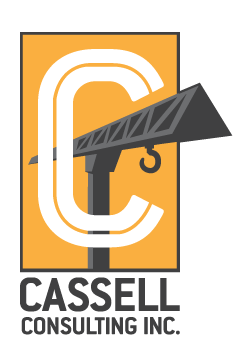Does this sound familiar at your company?
1. Bids are time‐consuming
2. Job costing is tedious
3. We’re too busy to change now‐ and besides we’ve always done it this way
This article takes a light-hearted look at excuses for operating out of control.
1. Bids are time‐consuming: How are you doing your takeoff? Are you still using a scale and wheel? Digitizing on the computer? On Screen Takeoff directly from digital plans? From CAD? If you’re not using technology efficiently, (and rest assured that your competitors are), you’re burning daylight. And burning out precious employee resources. How do you enter the quantities once they’re taken off? Do you compile the estimate manually, then enter into a spreadsheet? Or do you build the bid directly from within your estimating software?
The underlying issue isn’t just about using computers, it’s about your company’s commitment to efficiency. While on the one hand we’re a very conservative industry, on the other, the world is shrinking, and business moves at the speed of the Internet. In my nearly 40 years in the construction industry, I’ve observed that Owner’s expectations always move just a little faster than the latest technological breakthroughs that accelerate project delivery! It’s a never‐ending vicious cycle. And don’t expect that buying expensive software is a silver bullet either. You can’t open a box, and turn inconsistent estimating into a well‐oiled system. So what’s the answer? The importance of a consistent, production‐based estimating system cannot be overstated. What does that mean? Instead of unit cost estimating, ($175 per square foot for a house, or $25 per cubic yard of backfill) you need to estimate, track, and record- know how long it takes to do the primary tasks associated with your work. Where’s your biggest risk? (Hint: it’s not in estimating the material. A young engineer straight out of school can figure that.) It’s in estimating, planning, scheduling, executing, and supervising your company’s self‐performed labor. That’s the key to how successful companies stay that way. How to do that? That leads us to the next fundamental that all good companies do well, detailed record‐ keeping of job costs.
2. Job costing is tedious: Ultimately, in order to estimate accurately, every company needs to keep accurate records of the time it takes to do tasks that are inherent in each project. While it may seem a bit overwhelming at first, every project is made up of phases of work, each of which can be broken down into individual tasks. Whether your company builds infrastructure for subdivisions, single family homes, or commercial interior improvements, any one facet of one of those, or all of the above, every project is ultimately the sum of its individual parts. Whether it’s installing water line in the ground, framing walls, installing cabinets or light fixtures, are all empirical tasks; tasks which require predictable resource allocation, and predictable duration. It’s tracking this information, (and being able to find it later) that separates estimating from guessing. Good companies don’t guess, they estimate! Unit cost information is a good double check, but it shouldn’t be confused with good estimating. Unit cost is really an after‐the‐fact analysis of the sum of costs of the actual tasks involved in producing the work‐ the material, labor, and equipment it takes to get the job done. All it takes to do this is a sensible set of job cost codes, and a commitment to keeping accurate daily records. It’s making the decision to do it that’s often the biggest stumbling block, which brings us to topic # 3.
3. We’re too busy to change now – besides we’ve always done it this way: Of all the reasons to do, or not to do something, this is likely the worst of the bunch. We’ll shoot holes in the second half of that statement first. The only constant in the business world (and in life for that matter) is change, and you can rest assured your competitors aren’t counting on last year’s methods to determine this year’s strategy. Look at success stories such as Google, Nike, Columbia, and Quicksilver, just to name a few. Are their products and services the same as last year, and the year before that? Not even close! Your competition knows it can’t afford to rest on its laurels, and neither can you. At Cassell Consulting we work with many companies in transition, seeking advice and guidance when they know they need to change to keep up, but just don’t always know the best way to do it. That’s where we can help. No matter how busy or profitable you are, if you don’t know and track your job costs at the detail level, you’re doing little better than making a living rolling the dice, much like trying to beat the House in Las Vegas. How much longer do you think you can continue? In construction, you’re only as good as your next job. Sad but true‐ even if you just did 10 profitable jobs in a row, your next one can still take your company down. And too much work (without appropriate controls) has bankrupted far more companies than too little. Just ask your bonding company. To get in control, you need a consistent process that defines the way you work, one daily time sheet at a time, in control, day by day, month by month, year in and year out.
Estimating Controls – a light-hearted look at excuses for operating out of control.




